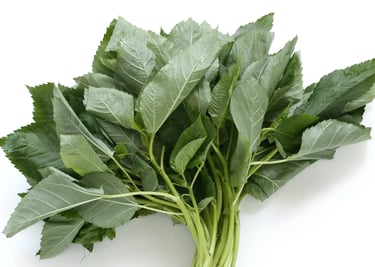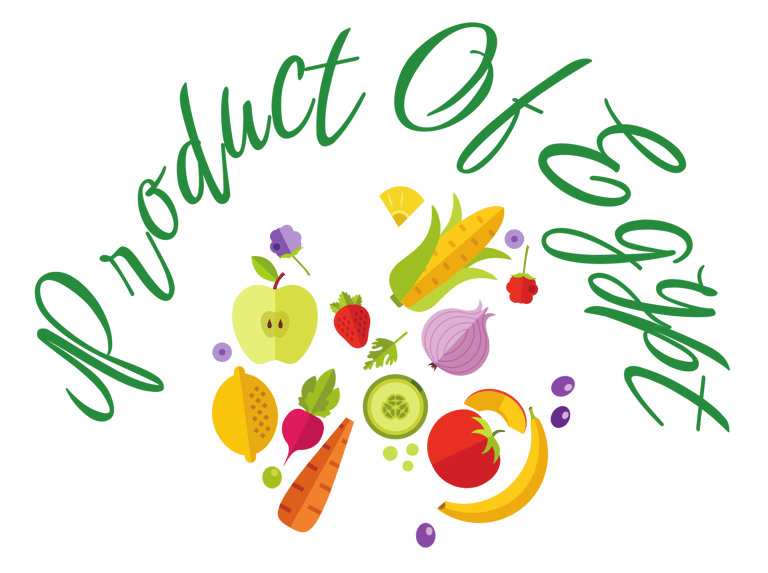Egyptian Fruits & Vegetables
Egypt Is The World's Largest Date Producer, harvesting 1.8 million tons annually but exporting a smaller quantity due to logistical issues and the need for refrigeration. Key date varieties include Barhi and Majul, which require significant investment, but the industry also produces and exports other varieties like Sewi and Giza dates. Farmers are facing challenges from the climate crisis, including rising temperatures and water shortages, while also needing to improve their production chains to meet international standards for greater export.
Date Production in Egypt
Top Producer:
Egypt leads the world in date production, harvesting 1.8 million tons each year.
Variety of Dates:
Besides Majul and Barhi dates, Egypt also produces and exports Sewi and Giza varieties.
Farming Practices:
Date palms grow in oases, requiring extensive irrigation, and farmers use a process called "Hababauk" for hand-pollination of female flowers.
Growth Phases:
Dates go through four phases (Chimri, Khalal, Rutab, Tamar) before they are ripe, developing their size, sweetness, and color.
Challenges & Opportunities
Logistical Hurdles:
A lack of large refrigerators makes it difficult to store dates and leads to spoilage and pest infestation, reducing export quantities.
Climate Change Impact:
Farmers are threatened by rising temperatures and water scarcity, which affect their harvests.
Investment Needs:
The government is investing in Majul and Barhi dates due to their high costs but farmers need upgraded production chains, including refrigerated vehicles and other infrastructure, to increase exports.
International Standards:
Obtaining ISO certificates is crucial for Egyptian producers to meet international quality standards and facilitate increased exports.
Consumption & Culture
Nutritional Benefits: Dates are a nutritious and healthy snack, rich in fiber and potassium, supporting heart health.
Dietary Staple: Muslims often break their fast with dates during Ramadan.
Cultural Presentation: Dates are often presented in gift boxes with contemporary designs, sometimes inspired by traditional Egyptian themes like handmade tents








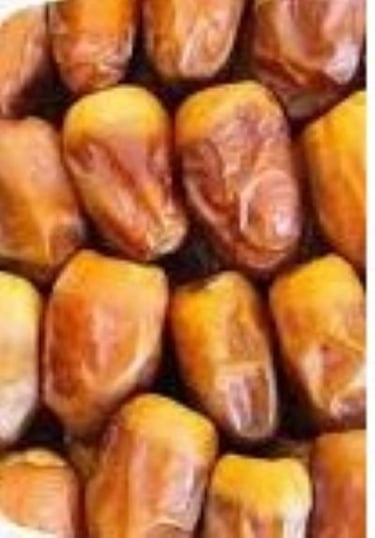

Egyptian Oranges & Citrus are a major export for Egypt, which has been one of the world's largest fresh orange suppliers. The country's ideal climate and fertile soil allow for an extended harvest season, producing high-quality fruit prized for its vibrant color, juiciness, and sweet-tart flavor.
Varieties
Egypt primarily cultivates several varieties, each with distinct characteristics:
Navel oranges: Known for their distinct "navel" formation, these are a popular, seedless variety with a thick, easy-to-peel rind and sweet flavor. The Navel orange season runs from mid-November to late February.
Valencia oranges: This variety is a top choice for juicing due to its high juice content and a balanced sweet-tart taste. The Valencia season extends from January to May, allowing for a longer export window.
Baladi oranges: This native Egyptian variety is very juicy, often contains seeds, and is primarily used for juice production. It has a slightly tart-sweet flavor.
Sukkari oranges: A sweet variety often consumed fresh, it is known for having seeds.
Production and export
Top exporter: Egypt has consistently ranked among the top orange exporters globally, competing with countries like Spain and South Africa.
Favorable conditions: The combination of an optimal climate, fertile soil, and investment in large-scale agricultural projects has enabled Egypt to ramp up production and expand its global market share.
Export markets: Egyptian oranges are sold to a wide range of international markets in Europe, the Middle East, Asia, and North America. Top export destinations include Saudi Arabia, Russia, the Netherlands, India, and China.
Climate change challenges
Despite its success, the Egyptian orange industry faces challenges, particularly from climate change.
Impact on production: In recent years, unfavorable climate conditions, including prolonged periods of high temperatures, have negatively affected production levels. For example, the 2024/2025 season experienced a forecasted decrease in production due to heat during the fruit-set period.
Accelerated ripening: Weather conditions, such as warmer temperatures, have also caused accelerated ripening, which has led to adjustments in the official start date of the export season.
Price and quality adjustments: Market fluctuations due to climate effects on production have impacted the price and quality of oranges in key markets
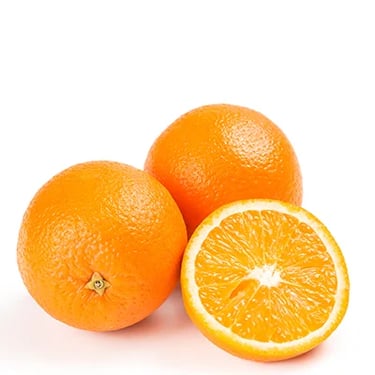



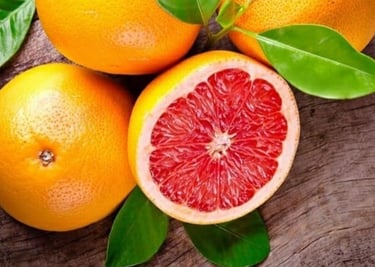

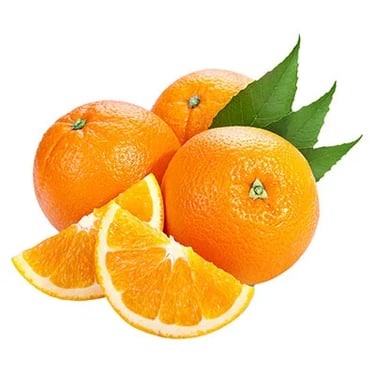

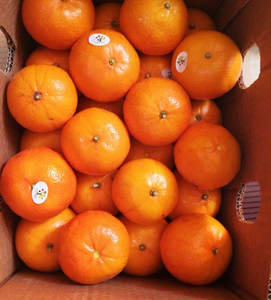

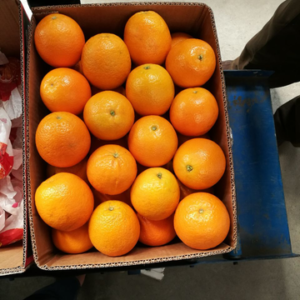



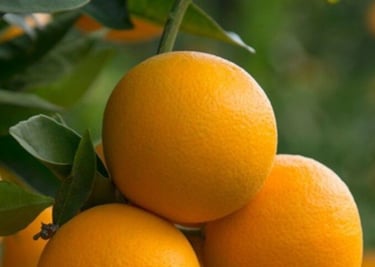





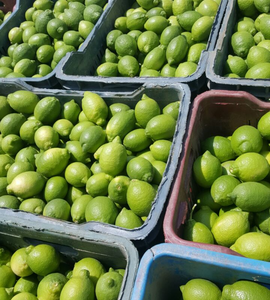

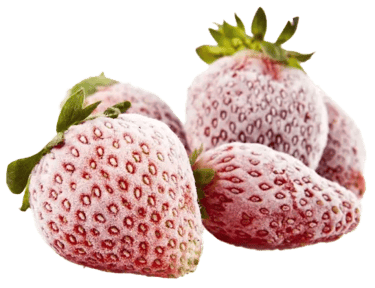

Egyptian Strawberries
Egypt is a major global exporter of strawberries, known for their high quality, intense color, sweetness, and juiciness, particularly due to the country's favorable winter climate that allows for out-of-season production. The main varieties include Festival, Sensation, Fortuna, and Florida-bred cultivars like Winterstar™ and Florida Brilliance. Strawberries from Egypt are exported both fresh and frozen to markets worldwide, including Europe, Asia, and the Americas.
Characteristics
Quality:
Egyptian strawberries are prized for their intense color, natural sweetness, and juicy texture.
Nutritional Value:
They are rich in vitamin C, potassium, folic acid, fiber, and antioxidants like anthocyanin and quercetin.
Varieties:
Popular varieties grown in Egypt include Festival, Sensation, Fortuna, Winterstar™, Florida Brilliance, and Florida Beauty.
Production & Climate
Favorable Climate: Egypt's ideal winter climate allows for cultivation during off-seasons in other countries.
Concentrated Farming: Strawberry cultivation is primarily located in the Nile Delta region.
Challenges: Growers face challenges such as rising production costs and plant susceptibility to pests and diseases due to persistent planting of the same varieties, leading to an increased need for new, hardier varieties and improved farm management practices.
Export & Market
Global Exporter:
Egypt is among the world's top strawberry exporters, particularly for frozen strawberries.
Key Destinations:
Major trade partners for Egyptian strawberries include Germany, the United Kingdom, and the Netherlands, with growing markets in Southeast Asia.
Seasonality:
The fresh strawberry season typically runs from November to February, but the export of frozen strawberries continues year-round


Egyptian Pomegranate holds significant importance in Egypt, both historically in ancient culture and in modern agriculture as a prized export. Pomegranates are cultivated for their exceptional quality, rich flavor, and vibrant color.
Pomegranate varieties in Egypt
Several varieties of pomegranates are grown in Egypt, with some being native and others grown for the global market.
Wonderful: A widely exported variety known for its deep red seeds, sweet-tart flavor, and high juice and antioxidant content. The harvest season is typically from September to November.
Baladi: A traditional, native Egyptian variety known for its delicate texture and sweet flavor, making it a local favorite for eating fresh. The harvest season is from October to December.
Early 116: A newer, early-season variety prized for its rich sweetness and high juice yield. Its harvest from August to September allows Egypt to supply the market earlier than many other producers.
Manfaluti: A variety known for its sweeter taste and slightly smaller seeds.
The pomegranate in ancient Egypt
Introduced to Egypt from western Asia around 1600 BCE, the pomegranate, known as "hnmt," was embraced for its symbolic meaning and utility.
Symbolism and beliefs
Fertility and renewal: With its abundance of seeds, the pomegranate symbolized fertility, abundance, and eternal life.
Afterlife: The fruit was a common funerary offering, placed in tombs to aid the deceased in their journey to the afterlife.
Royalty and divinity: A silver vessel shaped like a pomegranate was found among King Tutankhamun's treasures, and the fruit was associated with deities like Hathor, the goddess of love and fertility.
Sexuality and romance: Pomegranates were also linked to love and sexuality, appearing in ancient Egyptian love poems.
Practical and medicinal uses
Medicinal purposes: The Ebers Papyrus (c. 1550 B.C.) documents the use of pomegranate parts to treat intestinal parasites and infections.
Beverages: Pomegranates were consumed fresh, juiced, and potentially fermented into a wine known as shedeh.
Dye: The flowers and peel were used to create red and yellow dyes for leather and other materials.
Artistic and decorative significance
Pomegranates were a recurring decorative motif in Egyptian art and craftsmanship, appearing in tomb paintings, decorative vessels, jewelry, and even furniture
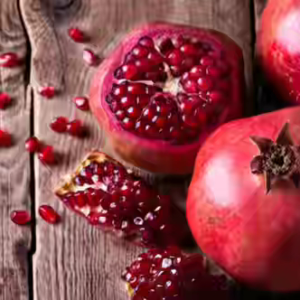

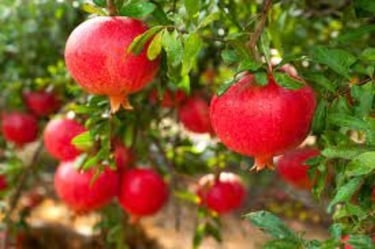

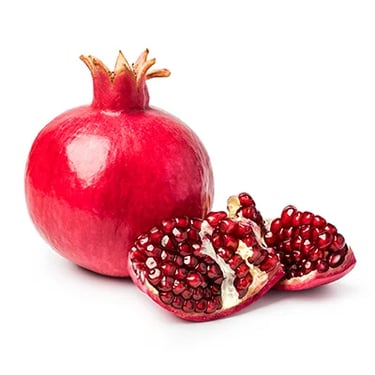

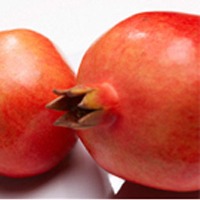

Egyptian Grapes are a significant agricultural product with a long season from late May to November, cultivated from north to south of the country. Key varieties include Superior Seedless (light green), Flame Seedless (red), and Crimson Seedless (dark red). These table grapes are a major export for Egypt, with strong demand in Europe, Russia, and other markets, due to their high quality, sweet taste, and crisp texture.
Key Characteristics
Variety: Egypt produces a range of table grape varieties, often grown for export.
Popular Varieties:
Superior Seedless: Light green, sweet, and crunchy.
Flame Seedless: Bright red, rich, and sweet with a firm texture.
Crimson Seedless: Dark red, sweet, and known for its crispy texture.
Season: The long cultivation season spans from late May to November.
Nutritional Value: Grapes are rich in Vitamin C and Vitamin K, and contain beneficial antioxidants.
Production & Exports
Major Crop:
Grapes are one of the most important fruit crops grown in Egypt, second only to citrus.
Export Markets:
The primary export markets for Egyptian table grapes include the European Union, Russia, and the United Kingdom.
Production Growth:
Factors like joining the International Convention for the Protection of New Varieties of Plants and the introduction of new grape varieties have helped enhance production and export quality.
Uses
Fresh Consumption: The primary use of these table grapes is for fresh eating.
Culinary Uses: They are also used in fruit salads, on cheese platters, and in desserts.
By-products: Research is also underway on the bioactive compounds found in grape seeds and leaves, exploring their potential use in food and pharmaceutical applications
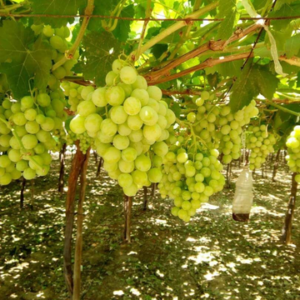

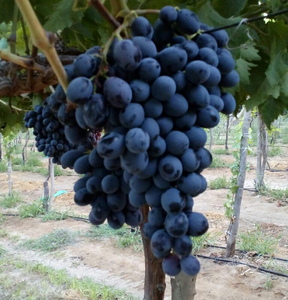

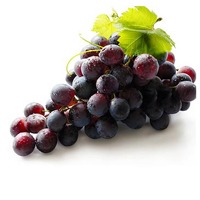

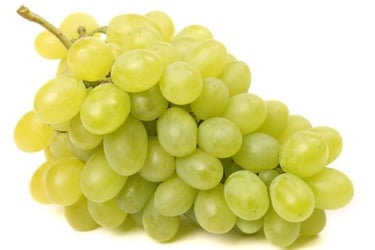

Egyptian mangoes are prized for their unique sweetness, rich flavor, and diverse varieties. They are a beloved fruit in Egypt with a rich history and cultural significance, and are primarily grown in the fertile regions of the Nile Delta and along the Suez Canal.
History
19th century introduction: While native to South Asia, mango trees were brought to Egypt in the early 19th century under the reign of Muhammad Ali Pasha.
Commercial growth: Initially planted as ornamental trees in palace gardens, mango cultivation expanded commercially across the country in the 20th century.
A sign of well-being: The health of Egypt's mango harvest is sometimes seen as a reflection of the nation's socioeconomic well-being.
Mango varieties
Egypt boasts over 200 varieties of mangoes, each with a distinct flavor and texture. Popular varieties include:
Awees (or Ewais): Considered one of the sweetest mango varieties in the world, with a Brix value often exceeding 23. It is a commercially popular, juicy, and tender fruit with a sweet and tangy flavor and floral notes.
Zebda: Named for the Arabic word for "butter," this variety has a buttery, soft texture and is often used for juices, purees, and desserts. It is also one of the few varieties that can be frozen for up to a year.
Fas: Sometimes called the "father of Egyptian mango varieties," it is highly sought after by high-income customers and known for its concentrated flavor. A smaller version is sold as "Fass Ewais".
Alphonso (Alfons): Known as the "King of Mangoes," this variety is valued for its creamy, fiberless texture, and intense sweetness.
Sukkary: A very sweet and juicy mango with low fiber content, making it a favorite for fresh eating and desserts.
Taymour: A large variety known for its distinctive flavor and high juice content.
Season and cultivation
Harvest season: The mango season typically runs from June to November.
Regional centers: Historically, the governorate of Ismailia was the main mango producer. Due to climate change and aging trees, fine-quality mangoes are now also cultivated in the Al-Haram area of Giza and other desert regions.
Eco-friendly practices: Mango trees are a common crop used in Egypt's land reclamation efforts, which helps restore degraded land.
Uses in cuisine and culture
Fresh eating: Many varieties are simply enjoyed fresh, often with a sprinkle of salt or sugar.
Juice and smoothies: Mango juice is a staple drink in Egyptian households and is widely available in cafes.
Desserts: Mangoes are a popular filling or topping for traditional desserts like kunafa and mahalabia (pudding).
Savory applications: The fruit is also used in savory dishes, including chutneys, pickles, salads, and even with koshari.
Cultural symbol: The mango symbolizes abundance and happiness in Egyptian culture, and the seasonal arrival of mangoes is an eagerly anticipated event.
Ismailia Mango Festival: The city of Ismailia hosts a festival to celebrate the local mango harvest, featuring parades, bazaars, and live entertainment.
Exports
Growing export market: Mangoes are Egypt's second-largest fruit export by volume, behind citrus. Key export markets include the Middle East, Russia, and the European Union.
Export varieties: While many local varieties are not suitable for long-distance transport, some are increasingly exported. Varieties like Keitt, Kent, and the local Owaisi and Naomi are finding growing demand in Europe.
Frozen mangoes: Egypt also exports a significant amount of Individually Quick Frozen (IQF) mango chunks and slices, especially to European markets
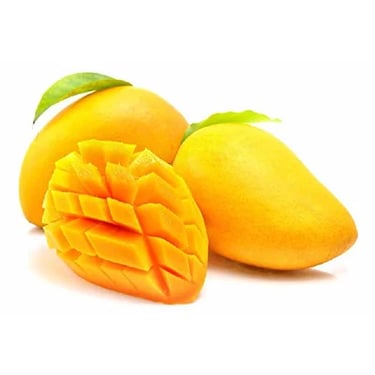









Egyptian Potatoes & Sweet Potatoes are a major agricultural product, with the country being one of Africa's leading producers and a significant exporter of the crop. With favorable conditions and advanced irrigation methods, Egypt grows numerous potato varieties for both the domestic market and for export to European and Arab nations. Potatoes are also a staple in Egyptian cuisine, most famously in the dish sanyet el batates.
Production and varieties
Growing regions and seasons:
Main areas: The primary growing regions are the fertile Nile Delta and Middle Egypt. Desert reclamation areas like Nubaria and Wadi El-Natrun have also become important production zones, utilizing advanced irrigation.
Annual harvests: Egypt's climate allows for a long growing season. The main harvest is typically available from January to June, with potatoes from cold storage available until October.
Irrigation: The farming is entirely dependent on irrigation, drawing from the Nile River and groundwater, especially in desert areas.
Cultivated varieties:
Export varieties: The most common variety exported is Spunta, but Cara, Alpha, Mirka, and Famosa are also grown for the fresh market.
Processing varieties: Specific varieties are grown for industrial processing into chips and french fries. These include Lady Rosetta, Hermes, Agria, Santana, and Diamant.
Salt-resistant varieties: In reclaimed lands with saline soil, the resilient Sagitta and a new hybrid from HZPC have been introduced to improve yields.
Hybrid varieties: Newer, resilient hybrid varieties that can be grown from true potato seed are also being trialed to reduce dependency on imported seed tubers and to improve disease resistance.
Exports and market trends
Key export markets: Europe and Arab countries are the primary destinations for fresh Egyptian potatoes. In 2024, Russia dramatically increased its imports due to harvest issues at home, and the United Kingdom also became a larger importer following production losses in Cyprus.
Global ranking: Egypt is consistently ranked as a top potato producer and exporter and is one of the world's top four potato exporters overall.
Egyptian potato dishes
Sanyet el batates: The most iconic potato dish in Egypt, which is a baked potato casserole.
Preparation: The recipe typically involves potato slices, tomatoes, and onions, often with a vegetable or chicken broth. It can be made with or without meat and is served over vermicelli rice.
Seasonings: Common spices include cinnamon, salt, and pepper.
Innovations and challenges
Innovations: To increase yield and manage climate change, Egyptian growers are implementing modern farming techniques, including efficient central-pivot and drip irrigation systems.
Challenges:
Environmental stress: The industry faces high pest and disease pressure, water scarcity, and the impact of climate change. Salinization in the Nile Delta is also a growing concern due to rising sea levels.
Dependence on imports: The high cost of importing seed potatoes, fertilizers, and other chemicals is a significant issue for farmers.
High food inflation: The government has previously tried—and failed—to control high food inflation by temporarily banning exports of produce like potatoes
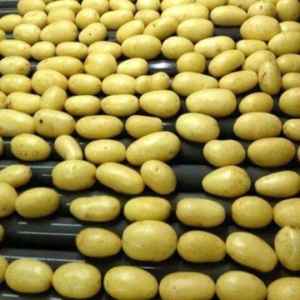

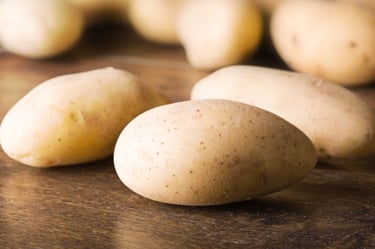

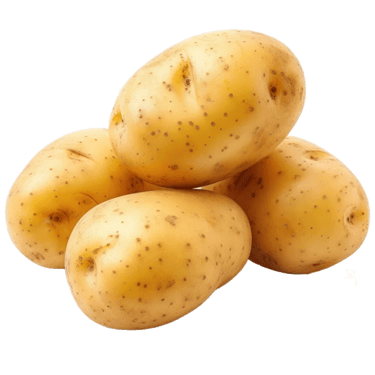

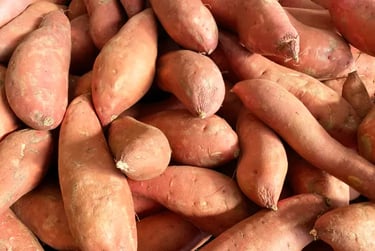

Egyptian Onions
Onions in ancient Egypt were considered a symbol of eternity due to their concentric rings and were a staple food and significant part of funerary rituals, with depictions on tombs and even placement within mummies. Cultivated for millennia in Egypt and the Mediterranean region, onions are a leading agricultural export from modern Egypt, known for their quality, robust flavor, and varieties like yellow and red onions.
Historical and Cultural Significance
Symbol of Eternity:
The concentric rings of the onion were seen as representing the infinite cycles of life and eternal life, according to the New Mexico State University.
Funerary Rites:
Onions were used in religious and funerary rituals. Mummies, including Pharaoh Ramses IV, have been found with onions placed in their eyes, ears, or next to their bodies, notes Gills Onions.
Artistic Depictions:
Paintings of onions appear on the walls of pyramids and in tombs from the Old and New Kingdoms, reports the New Mexico State University.
Food and Offerings:
Onions were a staple food, eaten raw, and were also depicted on banquet tables and altars as funeral offerings.
Modern Egyptian Onions and Exports
Cultivation:
The fertile soil and favorable climate of the Nile Delta have contributed to the production of onions with superior taste and quality in Egypt.
Export:
Egypt is a significant exporter of onions to global markets, with companies like Gezira United specializing in exporting various types, including red and yellow onions.
Quality:
Egyptian onions are known for their robust flavor and are produced under stringent quality control and sustainable farming practices, says Gezira United.
Egyptian Walking Onions
Unique Growth:
This variety, also known as top-setting or tree onions, is unique because it produces small bulbils on top of the stalk rather than flowers.
Propagation:
When the bulbils mature, the stalks bend to the ground, allowing the bulbils to root and grow new plants, giving the appearance of the onion "walking" or wandering.
Edible Parts:
The entire plant, including the young shoots, stems, and the bulbils, can be eaten
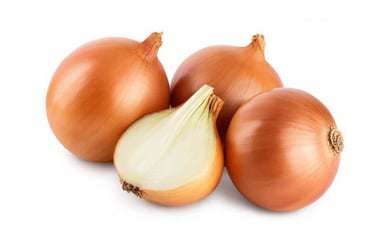

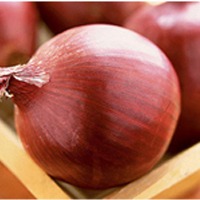

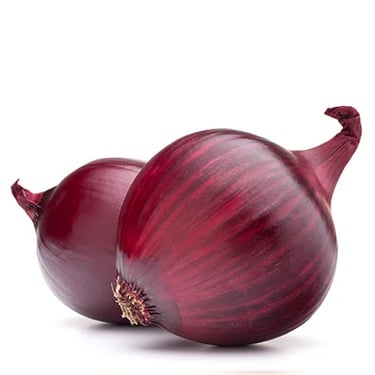





Egyptian Garlic has a history dating back to antiquity and has recently emerged as a strong competitor in the global market, rivaling traditional producers like China and Spain. Its competitive advantage is driven by its quality, flavor, and a long shelf life, supported by favorable growing conditions in Egypt.
Cultivation and varieties
Growing conditions: The fertile soil of the Nile Delta, combined with Egypt's dry climate and centuries of farming knowledge, provides ideal conditions for cultivating high-quality garlic.
Main varieties: Egypt produces two primary varieties that cater to different markets:
White Garlic: Features large, smooth, and mild-flavored white bulbs, similar to Chinese garlic. It is mainly used in food processing and for domestic consumption, with limited exports.
Red/Purple Garlic: This variety, similar to Spanish and Argentinian garlic, has a reddish-purple hue and a stronger, more pungent flavor. It is the star of Egypt's garlic exports and is popular in Mediterranean and Latin American markets.
Market and exports
Growing export market: Egyptian garlic has become a cost-effective and reliable alternative for international buyers. Rising production costs in China and increased prices in Spain have made Egyptian garlic more attractive.
Strategic location: Egypt's proximity to Europe, the Middle East, and Africa allows for faster shipping and lower logistics costs compared to garlic from China. This ensures fresher deliveries and offers importers higher profit margins.
Export seasons: Egyptian garlic is available year-round, with specific harvest and export windows:
Fresh garlic: Harvested from January to March, with exports beginning in February.
Dry garlic: Cured for 40–60 days and exported from May to December, with a long shelf life of up to a year when stored properly.
Major markets: Egyptian garlic is in high demand in numerous markets, including Europe, North America, Oceania, and various countries in Asia and the Middle East.
Historical and cultural significance
Ancient use: Garlic has been a staple in Egypt since at least 3200 BCE. Ancient Egyptians highly revered garlic for both its nutritional value and medicinal properties.
Pyramid builders: Workers who built the pyramids were fed large daily rations of garlic, as it was believed to increase their strength and endurance.
Religious and spiritual roles: Garlic bulbs were discovered in the tomb of King Tutankhamen, suggesting its importance in burial rituals for protection from evil spirits in the afterlife.
Traditional cuisine: Today, garlic is a key ingredient in many traditional Egyptian dishes, such as molokhia and ful, a popular breakfast consisting of fava beans, oil, and garlic.
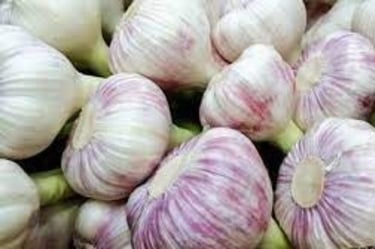

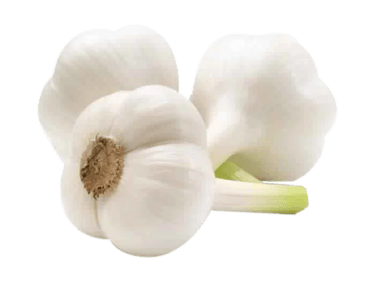

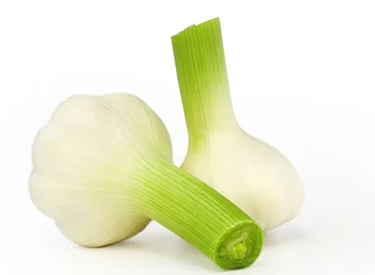

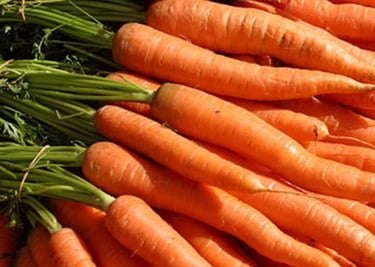

Other Egyptian Produce
Egypt is a major producer and exporter of a wide variety of crops, with agriculture being a cornerstone of its economy despite limited arable land. The majority of its agricultural production is concentrated in the fertile Nile Delta and Valley.
Fruits
Tomatoes: Grown in three seasons (winter, summer, and autumn), tomatoes are a major crop.
Molokhia: This type of leafy green spinach, known as the "food of kings," is one of the most widely eaten vegetables in Egypt and is used to make a popular green stew.
Legumes: Fava beans, lentils, and chickpeas are important sources of protein in the Egyptian diet.
Other vegetables: Other widely grown vegetables include cucumbers, eggplant, peppers, and various leafy greens.
Grains and sugar crops
Wheat: A primary winter cereal crop, Egypt is one of the world's largest wheat producers, though it remains the world's largest importer due to high domestic consumption.
Rice: This is a major summer crop and a significant export.
Sugar Cane and Sugar Beet: These are the country's top agricultural products by volume, with sugar cane grown primarily in Upper Egypt and sugar beet in the Nile Delta.
Maize: This is another major summer crop, with a large portion of the production used for livestock feed.


